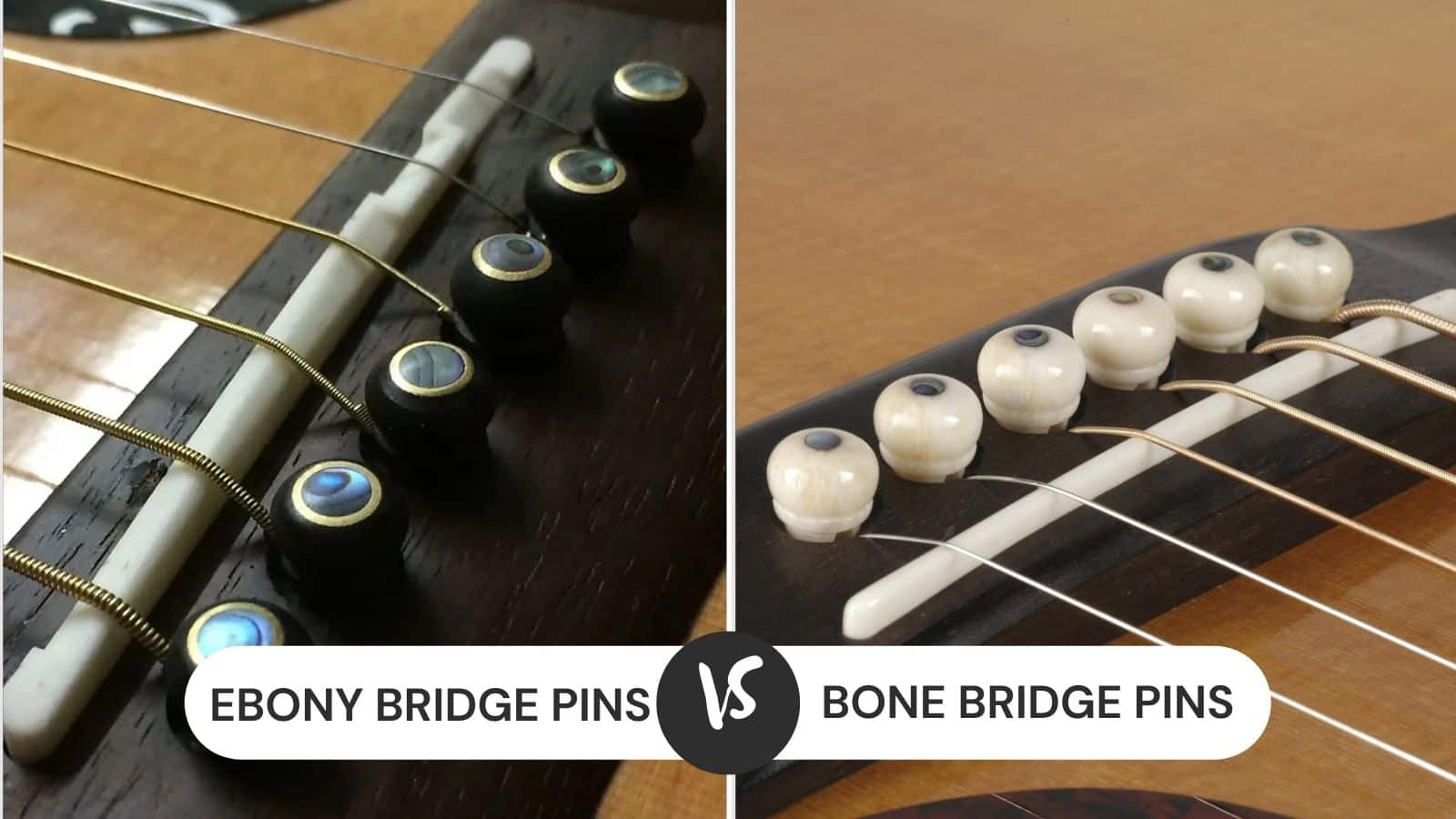
A guitar is a combination of multiple components, and a bridge pin holds extreme value in the overall functionality of the guitar. A bridge is essential for holding the strings against the bridge plate and bridge.
These pins are available in multiple sizes and materials, including bone and ebony. Every material can significantly impact the tone of the music, which is why it’s essential to understand the differences between ebony and bone bridge pins
Comparing Ebony vs Bone Bridge Pins
| Features | Ebony Bridge Pin | Bone Bridge Pin |
|---|---|---|
| Durability | High | Low |
| Impact on sound | Mellow, warm, and woody | Bright and punchy |
| Guitar | Guitars with mahogany and spruce wood | Acoustic guitars |
| Appearance | Dark color | Light color |
Ebony Bridge Pins
Ebony bridge pins are widely used for guitars made of mahogany wood since it creates a positive impact on the music tones. When used with mahogany, it will create sunny and bright tones.
These are handmade pins that are widely made from wood. Usually, it complements the guitars that have sides and back made from mahogany wood, a bridge and fingerboard made from ebony, and a high-end spruce wood top.
These bridge pins do not add any visual appeal to the guitar, but it impacts the sound outcomes of the guitars, as it adds sculpted and crisp lows with vibrant and punchy mids.
Ebony bridge pins add a refined deviation in the tones. When these pins are made from animal horn and wood, it will add muting as well as dampening effects on the frequency.
These bridge pins can be pretty affordable and are suggested for people who want to add woody texture.
1. Design & Application
Ebony bridge pins are a promising choice when you want to add a woody edge to the guitar and help reduce the treble and shrillness in the sound. In addition, these pins are extremely durable and are not susceptible to wear and tear.
These pins have a dark brown color, which is why they are paired with dark-colored guitars. It tends to create mellower and slightly darker tones, so the notes feel smooth, and the tonal shifts are streamlined.
Ebony is usually cut from hardwood, but it is still softer as compared to plastic and bone materials. This is why the tones sound mellow. These bridge pins are suitable for a wide range of guitars as it helps stabilize the guitar’s bridge.
These pins can help transmit the string vibrations to the guitar body and bridge. The ebony bridge pins are made from hardwood, as already mentioned, which makes them dense, resulting in resonant tones.
These bridge pins are heavier and denser when compared to plastic pins, which means they won’t break anytime soon.
Last but not least, these pins are likely to have a slightly curved top surface. The bridge pins are more resistant to fungi and bacteria, but it’s better to clean them with a special wood cleaner.
2. Sound
Ebony bridge pins are known to create a dark and warm tone, which also sounds resonant at times. In addition, it creates a brighter sound.
These pins are preferred by guitarists because the tuning is smooth, eliminating the chances of scratchy and buzzing sound. It has a higher density, which helps create a bright tone.
The bright tone actually adds more punch to the music. In addition, it has a smooth surface, and its higher density results in a consistent sound.
The ebony bridge pins have an improved sound transmission. The installation is extremely easy as you can use the screwdriver to remove the plastic pin of the guitar and use the wood chisel to remove to head of the pin and just put it in the ebony bridge pin.
In addition, the ebony bridge pins are extremely convenient to maintain and clean, making them suitable for beginners. Also, you should clean it with a wood cleaner after installation.
These pins have a tight fit, which improves the sustain and sound of the guitar.
Pros
- Extremely dense
- More durable
- Consistency in sound
- Improved sound shift
- Aesthetically pleasing
- Affordable
Cons
- Only works with mahogany, spruce wood, and ebony fretboard
Bone Bridge Pins
If you want an all-rounder bone bridge pin, this is a promising choice because it doesn’t contract and expand when it is exposed to extreme changes in temperature and humidity. This means that you can use these pins if you play outdoor music gigs.
This is the same reason that it improves the clarity of sound and purity of the trebles and enhances the sustainability as compared to wooden pins.
The bone bridge pins improve the purity of musical notes. For this reason, it is suitable for affordable guitars that have bolt-on necks.
In addition, these pins can add more clarity and focus on the higher harmonics and help ring off the shrilling and top voice.
1. Design & Application
Bone bridge pins are suitable for people who want an affordable solution without compromising on the clarity and ring, which helps improve the sound quality.
Bone is a hard material and has a white color, which is why they are used on light-hued guitars.
However, the harder material means that it can cause minor damage to the guitar’s bridge plate and holes in the longer run, particularly if you play rock and hard metal music.
Usually, the bone bridge pins are made from cow bones or ox bone, but it varies with the brand. It is immune to temperature and humidity changes, which means it won’t make an adverse impact on the sound.
The pin can be integrated with the abalone inlay to upgrade the overall appearance of your bridge. The pins can be used with Takamine, Martin, Fender, Gibson, and Taylor guitars, as long as you are using the cheaper versions.
On the other hand, if the bridge pins are too big for the guitar, the bone material can be easily sanded down. Some brands add a pronounced collar to the bone bridge pin, which makes it easy to remove.
It is suggested to purchase bone pins made from ox bone as it’s more durable and is not susceptible to deformation and breakage.
2. Sound
A bone bridge pin creates a specific impact on tone, which is usually bright. In addition, the pin can sharpen the sound attack.Given the hard texture, it can increase the sustain. The pins can enhance the clarity of sound produced by acoustic guitar.
It can add clarity to the sound, making them suitable for low-standard or cheap guitars, particularly acoustic guitars with steel-string designs.
In addition, the pure bone pin will also increase the volume and tonal characteristics of the sound.
It can enhance the mid-tones and low tones and adds sparkling highs to the sound. This means that the bone bridge pin will produce evenness in the tone.
It can easily ring off your guitar’s top voice and adds the focused sound in higher harmonics and registers.
In addition, the bone bridge pins improve the purity of fundamental notes and improve the sustain, tone, and volume.
The best thing about bone pin is that you can make subtle changes in the sound, so you can tweak the guitar’s sound more precisely. For the most part, the bone pins produce fuller and brighter tones.
These pins can add an accent to the sound spectrum’s higher end.
Pros
- Resistant to environmental damages
- Enhances the fundamental tones
- Precise tweaking of the sound
- Increases the sustain
- Affordable
Cons
- It causes damage in the long run
- It cannot be used with high-end guitars
The Final Verdict
The bridge pins can have a significant impact on the tone. If you are a beginner who has a cheap guitar and wants to increase the clarity of the tones and fundamental notes, you can use a bone bridge pin.
This is because these pins can cause damage to the guitar, which is why using them on high-end guitars won’t be a good idea.
On the other hand, the ebony bridge pins add warm, dark, and woody tones to the sound and will be more durable. These pins won’t cause any damage to the guitar, so it’s suggested for high-end guitars.

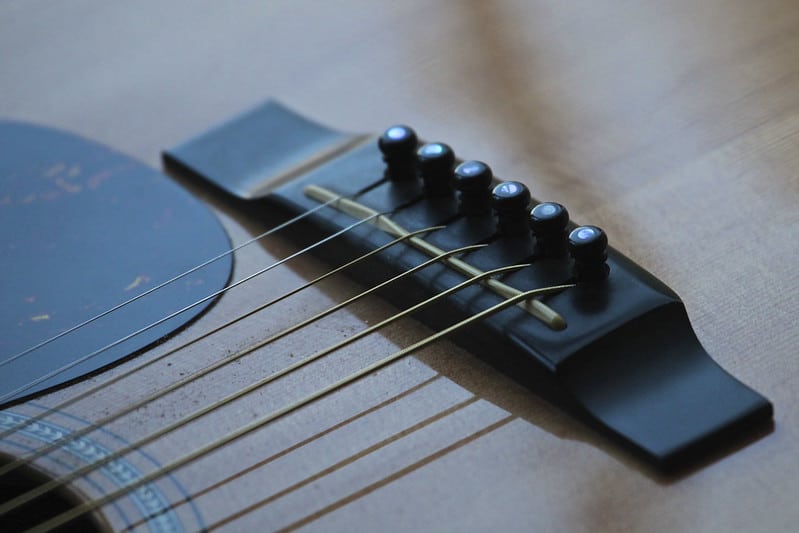
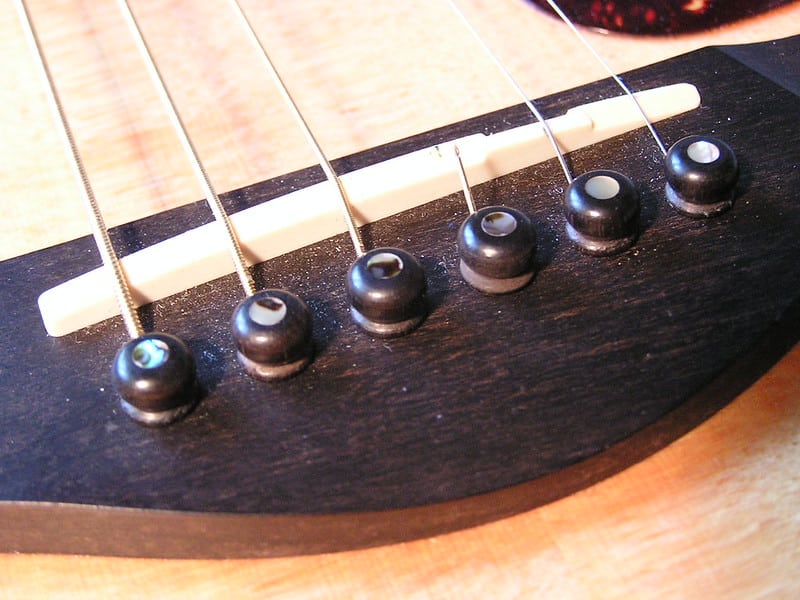
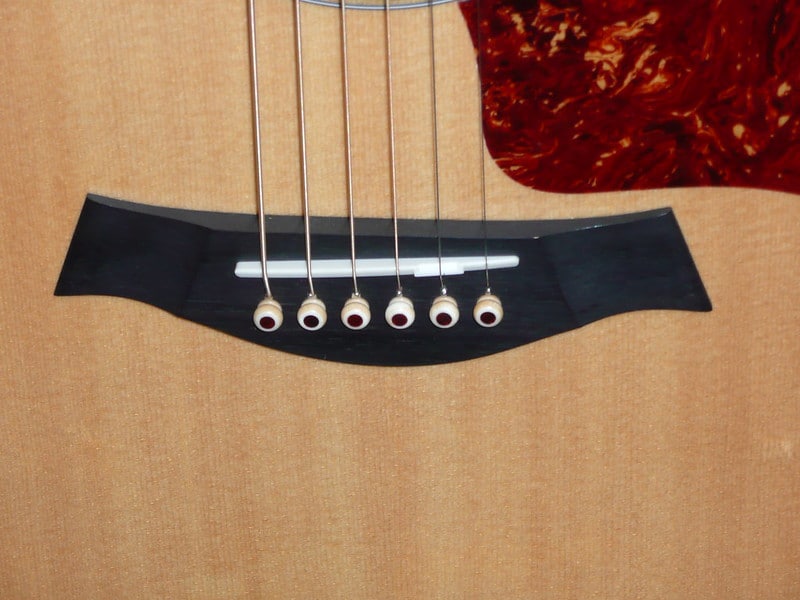
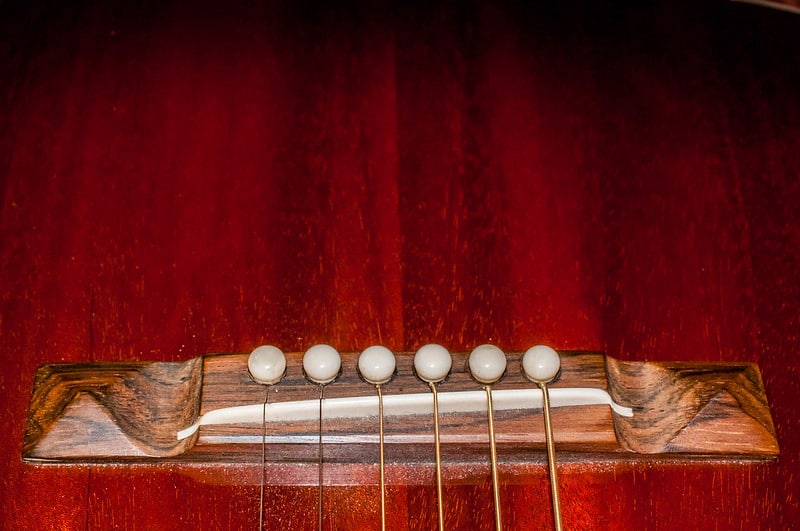
Thanks i think the ebony pins will enhance the tone on my D35 Martin
Thx